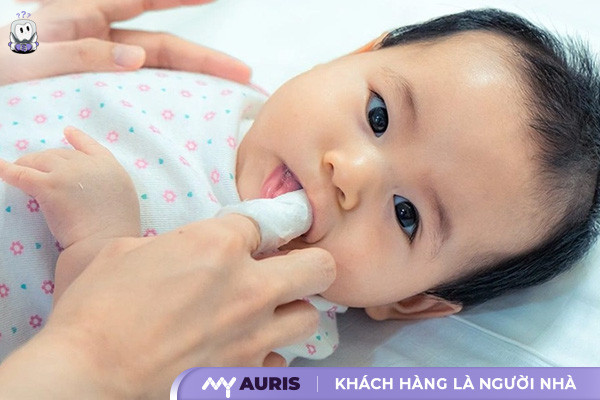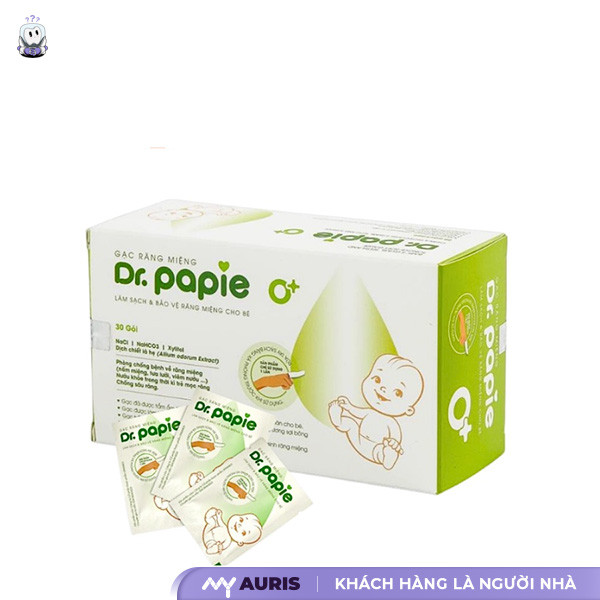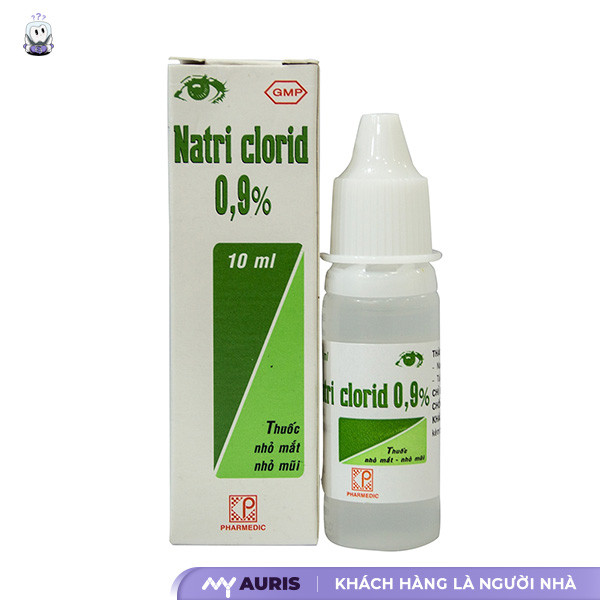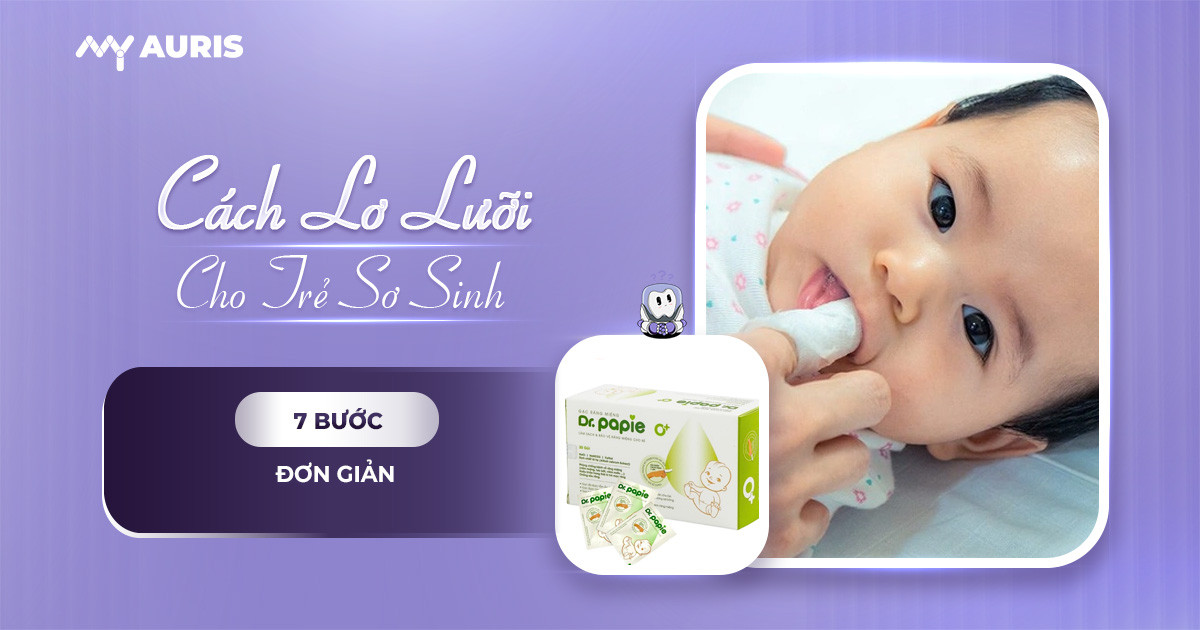How to tuck the baby’s tongue, mothers should tuck their baby’s tongue in the morning, about 2 hours after breakfast to reduce the risk of spitting up or vomiting. Prepare physiological saline and a clean gauze pad, wrap it on your finger after washing your hands. Dip the gauze in the solution and gently rub your tongue from the outside to the inside. If your baby is under 12 months, priority should be given to using physiological saline; Babies over 1 year old can add honey, spinach, chives or Denicol solution, ensuring safety and effectiveness.
Tongue Brusher for Newborns
Tongue removal for newborns requires the right tools. Making the right choice helps clean safely and effectively. This article provides instructions on how to use each type to ensure the health of newborns. Proper care of newborns helps children develop comprehensively.

How to Retrieve a Tongue for Newborns Using Gauze Clean
Tap the tongue for newborns with clean gauze to help remove milk residue, bacteria, prevent tongue-tie and oral cavity infections. First, clean your hands thoroughly. Wrap a clean piece of gauze around your index finger, dip it in boiling water and let it cool. Lay your baby on his back and gently open his mouth by gently pressing on his chin. Use your finger wrapped in gauze to gently wipe the tongue surface from the inside out. Repeat the movement several times until your tongue is clean.
Mothers should brush their baby’s tongue after each feeding, maximum 2 times/day. Absolutely do not rub too hard or put the gauze too deep into the baby’s oral cavity to avoid causing damage and vomiting.
If your baby has severe tongue-tie or shows unusual signs, you should take your baby to a specialist for examination and treatment.

How to Tongue-tipping for newborns with 0.9% physiological saline
Tongue-tipping for newborns with 0.9% physiological saline is a safe and effective method to help clean the oral cavity, remove milk residue, bacteria, and prevent tongue tie. First, wash your hands thoroughly with antibacterial soap. Then, prepare a tongue swabgurgling, wrapped around the index finger. Put a few drops of 0.9% physiological saline on the gauze.
Place the baby on its back, holding the baby’s head lightly. Gently put your finger into your baby’s mouth, wipe the tongue inside and out, the cheeks and gums. Use gentle movements to avoid damaging the baby’s oral mucosa. Brush your baby’s tongue twice a day, after feeding and before going to bed. Be careful not to slide your tongue too hard or too deep.

Clean Towel
Towel: soft, absorbent. Choose towels specifically for newborns. Wash and dry before use. Dip the towel in warm water or physiological saline. Gently wipe on baby’s tongue. Towels need to be washed after each use. Clean towels are used to clean newborn babies’ tongues, helping to clean them safely and effectively. The way to bathe newborn babies is usually to use a washcloth, ensuring the child’s health and development.
(Optional) Specialized Tongue Brushing Solution
Specialized tongue depressor solution: additional options. Consult your doctor before use. Choose products that are safe and suitable for newborns. Follow the instructions for use. Specialized tongue cleaner solutions can help clean the teeth of newborns more effectively, but care must be taken when choosing and using them.
How to Tongue Tickle for Newborns with Tongue-Thrush
How to remove the tongue for newborns with tongue tie needs to be done gently and properly to avoid damaging the baby’s delicate oral mucosa.
First, mothers need to wash their hands thoroughly with soap and warm water. Then, wrap a tongue swab around the index finger, dip it in 0.9% physiological saline and gently wipe away the white plaque on the baby’s tongue, palate and cheeks.
The tongue thrusting action should be done from the inside out, avoiding pushing deep into the throat causing vomiting. Each tongue flick should only last about 1-2 minutes, done 2-3 times a day, especially after the baby sucks or eats.
Absolutely do not use honey or any solution other than saline to loosen the tongue of newborn babies. If the tongue tie persists or shows unusual signs, the mother should take the baby to the doctor for timely examination and treatment.
Steps to Properly and Safely Tie the Tongue for Newborns
Move your tongue properlyEnsure safety and effectiveness. Take each step carefully, helping your child feel comfortable. This article provides detailed instructions on how to lick your tongue and protect your newborn’s health.
Step 1: Wash Your Hands
Hand hygiene: the first, most important step. Wash hands with soap and clean water. Or use antiseptic solution. Make sure your hands are clean and safe for children. Clean fingers are an important factor in infant oral hygiene, avoiding infection, protecting children’s health.
Step 2: Wrap the Tongue Gauze on the Index Finger
Choose clean, sterile tongue swabs. Wrap gauze around index finger. Make sure the gauze sticks firmly and does not slip. Clean gauze is a safe and effective tongue-tearing tool.
Step 3: Dip the Gauze In 0.9% Physiological Saline
Dip the wrapped gauze into 0.9% physiological saline. Physiological saline is antiseptic and safe for newborns. Physiological saline has an antiseptic effect, helping to remove bacteria and leftover food, protecting children’s health.
Step 4: Lay your baby on his back, head slightly tilted to one side
Place the child on his back with his head tilted slightly. This position helps children feel comfortable and easily loosen their tongue. Avoid letting children lie on their stomachs, which is dangerous.
Step 5: Gently Put Your Finger Into Baby’s Mouth, Wipe Tongue From The Inside Get Out
Gently put your finger into the child’s mouth. Wipe your tongue from the inside out. Use gentle movements to avoid causing pain or damaging the child’s tongue. Tongue scraping helps remove bacteria, leftover food, and prevents infant tongue thrush.
Step 6: Clean the entire oral cavity, inner cheeks and gums
Not only the tongue, but also the oral cavity needs to be cleaned. Gently wipe the inner cheeks and gums. Comprehensive oral hygiene for infants helps children develop healthily.
Step 7: Dry Your Baby’s Hands and Mouth With a Clean Towel
Dry the child’s hands and mouth with a clean towel. Ensure hygiene and avoid infection. The towel is soft and safe for children’s skin.
Step 8: Clean the Tongue Retractor
Clean the tongue depressor after use. Wash gauze and towels. Ensure hygiene, ready for next use. Cleaning tongue depressors helps prevent infection and protect children’s health.
In short, tongue depressors for newborns need to be done.Do it the right way, step by step. Hand hygiene, tools, and gentle movements are important factors. Caring for newborns requires meticulousness and attention. How to properly tongue-tie new-born babies helps them feel comfortable and healthy.
Why Must Tongue-tie for Newborns?
Why is it necessary? tongue tie for newborns? Babies’ tongues are where milk residue, plaque and bacteria accumulate. If not cleaned, they can easily lead to tongue-tie, oral fungal infections and other oral health problems. Tongue cleaning helps eliminate these harmful agents, keeping the baby’s oral cavity clean and fragrant, creating a comfortable feeling when breastfeeding and sleeping better. Furthermore, tongue-twisting also stimulates the baby’s taste buds, helping the baby feel the taste of food better when starting solid foods. Brushing the tongue regularly is also the first step in forming good oral hygiene habits for children later. Therefore, parents should brush their baby’s tongue every day, especially after feeding or before going to bed, with tongue swabs and saline, gently to avoid damaging the baby’s tongue.
Prevent Tongue Thrush in Newborns
Newborn babies are susceptible to tongue-tie. Thrush is a yeast infection that causes white patches on the tongue. Newborns with tongue tie suck poorly, cry, and feel uncomfortable. Tongue scraping removes yeast and prevents tongue tie. Children’s health is guaranteed through cleanliness. Physiological saline is antiseptic and safe for children. The gauze towel is soft and does not hurt the tongue. Brushing the tongue regularly helps children stay healthy and avoid the danger of infection. Tongue protrusion for newborn babies is very important, helping them avoid discomfort and unwellness due to tongue tie.
Helps Baby Breastfeed Better
A dirty tongue hinders breastfeeding. Food and milk stuck on the tongue cause discomfort, causing the baby to suckle poorly. Tongue scrapers help clean the tongue and remove dirt. Children breastfeed better, absorb nutrients better, and grow healthily. Proper tongue retraction is an important part of newborn care, especially breastfeeding. A clean tongue helps babies breastfeed easily, without discomfort or unwellness. This directly affects the health, nutrition and development of children.
Protection of Oral Health, Dental Development of Infants
Infant oral hygiene starts with the tongue. Tongue scraping removes bacteria and plaque. This protects oral health and creates a foundation for good infant oral development. Tongue brushing is the first step in building oral hygiene habits for children. A clean tongue and clean mouth help children avoid infections that are dangerous to their health. Tongue retraction for newborn babies properly ensures safety, effectiveness, and helps the best infant oral development.
Strengthens the Immune System
The mouth is the gateway to life. bacterial invasion. Tongue scraping removes bacteria, reducing the risk of infection. ThisHelps strengthen the immune system of infants and protect children’s health. Children’s health always emphasizes the importance of hygiene, especially tongue-tie. Proper tongue twisting is an effective way to care for children, helping them develop healthily. Tongue brushing combined with how to bathe newborns, how to cut the umbilical cord for newborns, how to care for newborns’ skin and how to prevent diseases for newborns helps children have the best start. A clean, healthy tongue helps children fight diseases, especially in infancy, when the immune system is still weak.
In short, brushing the tongue for newborns is very important. This helps prevent tongue tie, helps the baby breastfeed well, protects oral health and strengthens the immune system. This article provides instructions on how to safely and effectively tongue-twist for newborns. Proper care of newborns helps children develop comprehensively. Don’t forget to brush your baby’s tongue every day!
Important Notes When Tongue Brushing for Newborns
Roll Tongues for newborns need to be correct and safe. Note important points to help protect children’s health. The article provides necessary information for parents taking care of their newborns.
Tongue Retraction Frequency
Tongue movement for children after each meal. Or at least twice a day. The frequency of tongue-tie depends on the child’s health condition. Newborns may have tongue tie and need to move their tongue more often.
Tongue Retraction Force
Gentle movements. Avoid rubbing vigorously, causing damage to the tongue. A newborn’s tongue is soft and easily damaged. Moderate tongue pulling force helps remove bacteria and leftover food without causing pain to the child.
Abnormal Signs
Observe the child’s tongue after pulling. Note any unusual signs: bleeding, swelling, pain. If you see abnormalities, stop tongue-twisting and consult a doctor. Tongue deformities and yeast infections need to be diagnosed and treated by a doctor.
Cleaning Tools
Clean the tongue cleaner after each use. Wash and dry. Dirty tongue cleaners are a source of bacterial infection, endangering the health of newborns. Cleaning the tongue-tie device ensures safety and effectiveness.
Time to Tongue-tie
Touch the baby’s tongue after breastfeeding or eating. Tongue brushing helps remove bacteria, leftover food, and prevents tongue tie. Choose a time when the child is comfortable and cooperative.
Consult a Doctor
If you have any questions, consult a doctor. The doctor provides advice appropriate to the child’s health condition. Children’s Health is always ready to assist parents in caring for their newborns. Newborn babies can have tongue-tiecauses discomfort for the child, you need to consult a doctor for instructions on how to care for it.
In short, tongue tie for newborns requires many important points to be noted. Frequency, force of tongue retraction, cleaning of tools, and time of tongue retraction all affect children’s health. Parents need to be careful and meticulous in taking care of their newborns. How to properly and safely tongue-tie new-born babies to help them develop healthily.
Tongue-tipping with Malabar Vegetables (Need to Be Cautious)
Tearing the tongue with spinach: folk method, need to be careful. The article analyzes the advantages, disadvantages, implementation methods, and important notes. Infant health comes first.
Advantages
Male: easy to find, low cost. According to folk experience, Malabar spinach has cooling and antibacterial properties. Can support the treatment of tongue-tie in infants.
Disadvantages
Male can cause irritation and allergies. High risk of infection if not handled properly. Not every child is suitable. Children’s health recommends using physiological saline and clean gauze to loosen the tongue for newborns.
How to Do
Choose young spinach and wash it. Soak in diluted salt water. Boil until cooked, squeeze out the juice. Dilute with boiling water to cool. Dip a clean gauze towel in spinach water. Gently rub it on the baby’s tongue.
Note
Be careful when using spinach to rub the tongue on infants. Monitor your child’s reaction. Stop using if you see unusual signs: rash, discomfort. Consult your doctor before use. Infant health is most important. Physiological saline and clean gauze towels are a safer and more effective choice.
In short, tongue scraping with spinach requires careful consideration. The advantage is that it is easy to find and low cost. However, the disadvantage is the risk of irritation and infection. Parents need to be cautious and prioritize the use of physiological saline and clean gauze towels to ensure safety for newborns.





